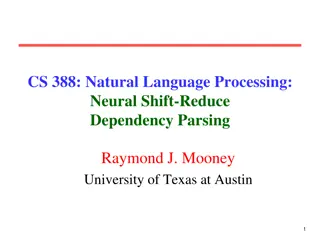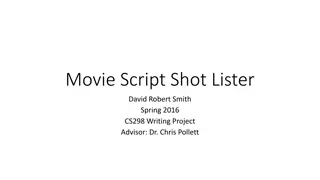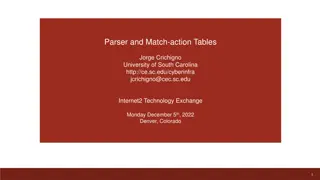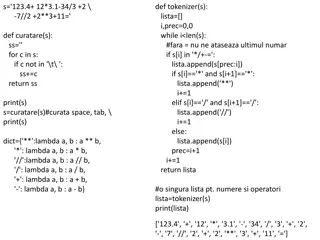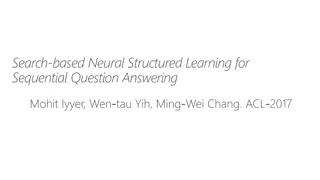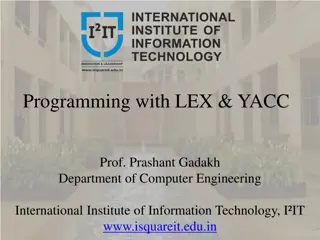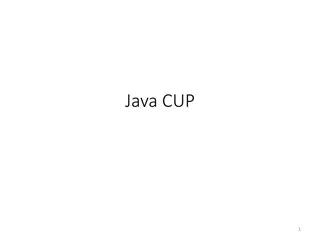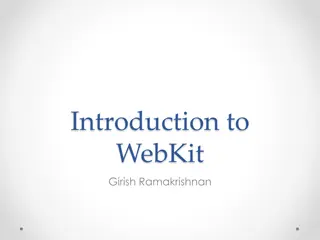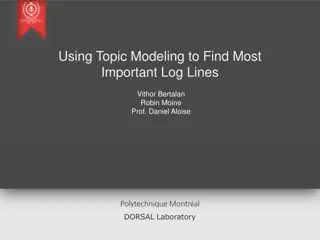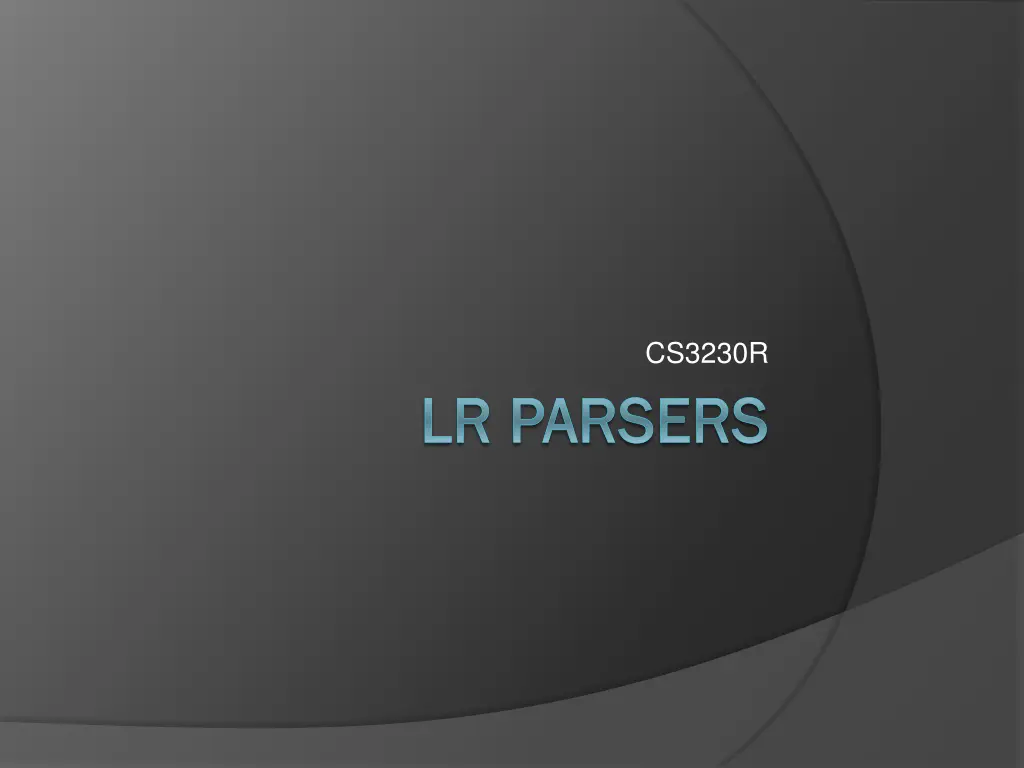
Understanding LR Parsers for Efficient Parsing
LR parsers play a crucial role in efficiently handling deterministic context-free languages, offering guaranteed linear time parsing. Discover the concepts of LR parsing, deterministic context-free languages, and the shift-reduce technique, along with their applications and limitations in programming and language processing.
Download Presentation

Please find below an Image/Link to download the presentation.
The content on the website is provided AS IS for your information and personal use only. It may not be sold, licensed, or shared on other websites without obtaining consent from the author. If you encounter any issues during the download, it is possible that the publisher has removed the file from their server.
You are allowed to download the files provided on this website for personal or commercial use, subject to the condition that they are used lawfully. All files are the property of their respective owners.
The content on the website is provided AS IS for your information and personal use only. It may not be sold, licensed, or shared on other websites without obtaining consent from the author.
E N D
Presentation Transcript
CS3230R LR PARSERS LR PARSERS
What is an LR parser? A bottom-up parser that efficiently handles deterministic context-free languages in guaranteed linear time
Deterministic context-free what? Class of context-free languages that can be accepted by a deterministic pushdown automaton
Deterministic context-free what? Unambiguous Of great practical use
Context-sensitive grammars int x; typedef int x;
Context-sensitive grammars MyObject object; MyObject object(parameters); MyObject object(); // ?
What is an LR parser? Left-to-right, Rightmost derivation Deterministic single correct parse without guesswork or backtracking Lookahead to avoid guessing or backtracking
What is an LR parser? Bottom-up construction of syntax tree
What is an LR parser? Unsuited for human languages, which require more flexible but slower methods Shift-reduce parser
Shift-reduce Shift Advances the input stream by one symbol That symbol becomes a new single-node parse tree Reduce Applies a grammar rule to some of the recent parse trees Joins them into one with a new root symbol
Shift-reduce Shifts and reduces until all input has been consumed, or until a syntax error is encountered Differs from other parsers in when to reduce and breaking ties between rules
Decisions, decisions When to shift, when to reduce?
Decisions, decisions Na ve approach: Compare current parse trees against rules Reduce if any matches Shift if no matches Check all rules every time Parser gets slower and slower for large input programs
Decisions, decisions Observation: CFGs are unambiguous Finite number of states
Decisions, decisions Preprocessing Encode each state the parser may be in with a number Goal Sums EOF Sums Sums + Products Sums Products Products Products * Value Products Value Value int Value id
Decisions, decisions Preprocessing Encode each state the parser may be in with a number Sums Sums + Products Sums Sums + Products Sums Sums + Products Sums Sums + Products
Decisions, decisions Preprocessing Decide in advance whether to shift or reduce Note what state the parser will be in afterwards Build a static parse table with this information
Decisions, decisions Parse table
Decisions, decisions LR parsers are table-driven FSMs
Decisions, decisions LR parsers are table-driven FSMs Tables are large and difficult to compute by hand LR parsers are generated from grammars written in DSLs
Example <expression> ::= <number> | <string> | <boolean> | <pair> | fun (<id>, ...) -> <expression> | <id> | (<expression>) | <unary-op> <expression> | <expression> <binary-op> <expression>
Example <expression> ::= | if <expression> then <expression> else <expression> | let <id> = <expression> in <expression> | <id>(<expression>, ...)



